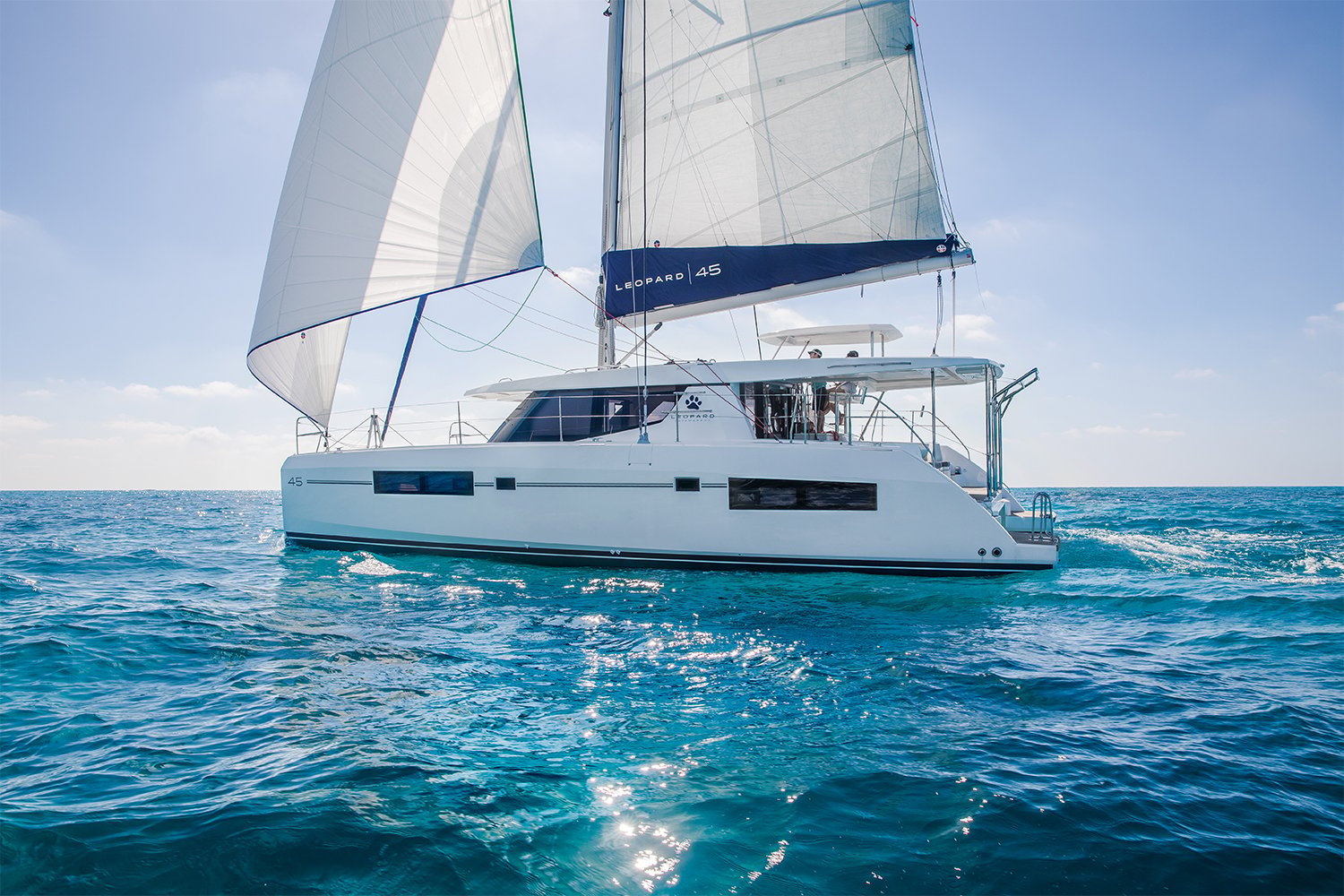Does your Leopard bucket list include epic journeys and passages, the kind of trips that take weeks, months, or even years to complete? Have you put those adventures on hold until you are retired or otherwise positioned to become a full-time cruiser? If so, perhaps you should consider commuter cruising.
Define "Commuter Cruising"
As the name suggests, commuter cruisers travel back and forth from home to their Leopards, often leaving their boats in distant ports for weeks or months before returning to undertake the next leg of their journey. This strategy allows Leopard owners to meet ongoing obligations or simply enjoy the pleasures of home and other travel while pursuing the exploration and excitement that are hallmarks of the Leopard lifestyle.
How do you do it?
“People think commuter cruising is difficult, but it’s a very common thing,” says Leopard 50 owner Randy Smith, who has commuted for years. “There are boats with absentee owners in every marina around the world. The old model was that you bought your boat, sold your house, and sailed off for a few years of full-time cruising. That typically meant waiting until retirement. But if you have flexibility in your work situation, you can both sail regularly and take care of business at home.”
Randy and his wife Lennie once commuter-cruised a roundtrip journey from Florida to San Francisco via the Panama Canal. This slow-motion adventure took place in one-week segments spread over 38 months. The couple, both entrepreneurs, would sail 200 to 500 miles, dock their boat, and fly home to work for three weeks before returning to their ongoing odyssey.
Things to consider
Of course, freedom isn’t free. Cost is a consideration in commuter cruising. Your budget must accommodate more than airfare. Docking and storage, fuel, parts, and maintenance services tend to be more expensive outside the U.S. and Caribbean.
It’s also advisable to retain someone to watch over the boat in your absence — an experienced person who can keep your Leopard clean, secure it when storms loom, and perhaps even text you a daily photo of the boat to ease your mind. The local harbormaster or marina manager can often recommend such a caretaker.
Planning ahead
Commuter cruising also requires some multi-layered planning. “To say that you need to be well-organized is an understatement,” says Randy.
The first step, obviously, is to identify your target destination. But, and here’s where flexibility comes in, savvy commuters understand that they might not reach that destination in their allotted time for various reasons. So, they also pick out a couple of Plan B ports of call.
When selecting primary and secondary destinations, be sure to weigh the full range of factors, including marina costs, the availability of maintenance services, and access to an airport. Be sure to allow plenty of time for this process. Gathering reliable information can be tricky, especially when you’re researching a non-English-speaking destination.
Comprehensive checklists are essential tools for ensuring that everything is buttoned up before leaving your Leopard for an extended period. Randy and Lennie have lists for both closing up and opening up their boat.
“My favorite item on our departing-the-boat checklist is to empty the kitchen trash can,” says Randy with a laugh. “You don’t want to come back to that smell!”
Covering all your bases
Other considerations include insurance and travel documents. Be sure to check with your insurance agent to see how your rates might be affected by leaving the boat in a new and distant port for an extended period. You certainly don’t want to layover in a port that’s vulnerable during hurricane or cyclone season, for example. And make sure any required visas allow you to get back to your Leopard when you’re ready to resume your trip.
Benjamin Franklin made two outstanding contributions to cruising. He was among the first to identify the Gulf Stream and, more importantly, he anticipated the rise of commuter cruising when he wrote, “Don’t put off until tomorrow what you can do today.”
That’s advice worth considering.


